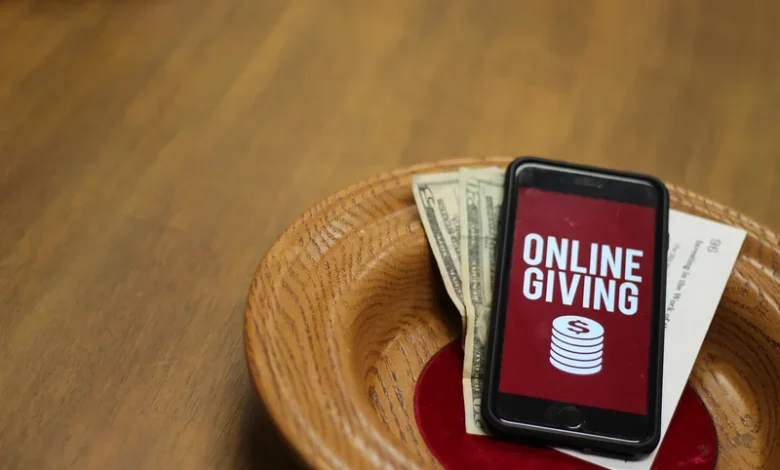How Are Churches Embracing Digital Donations?

In recent years, churches and faith communities have seen a significant transformation in how donations are collected. As society becomes increasingly cashless and technology-driven, many religious organizations are adopting new tools to support giving in a more modern, convenient, and transparent way. One of the most notable developments is the rise of the church payment app, which allows members to donate digitally with ease.
This shift reflects a broader change in how people manage their finances and engage with their communities. Digital giving not only meets donors where they are but also provides churches with greater efficiency and insight into their financial health. As more congregations recognize the benefits of digital donations, the use of church payment apps continues to grow.
The Rise of Digital Giving in Churches
The movement to digital giving is influenced by both lifestyle as well as advanced technology changes. The fewer people who use cash or write checks, the collection plates, which are based on the traditional method, have become unavailable to sponsor people as the best alternatives. In retaliation for this effect, churches have begun to adopt mobile and online interfaces that allow making contributions via smartphones, websites, and also through text messages.
This method is attractive to the younger generation who are tech experts and look for ease and quickness in their financial transactions. However, it has also made it possible for older members to use it, since the majority of them are feeling more and more comfortable with technology nowadays, especially if it isn’t complicated and it is confidential. The app for the church payment is the exact thing an intelligent person may want—to donate singly or regularly to his or her congregation easily, without the need for cash.
Technology Makes Church Finances Better
Churches embracing digital donations are one most common evidence for this scheme’s success, and primarily the ease of administration they entail. Having, on the other hand, the manual processes of tracking donations is a tiresome and erroneous approach. But what happens when members give money electronically? The records will be updated automatically, the receipts will be issued in real-time, and the reports will be drafted easily. As a result, this enables the church’s employees to spend more time on ministry and less on paperwork.
Furthermore, a church payment app is another thing that provides the transparency of both leadership and donors. Members log their giving history and receive the confirmation at once, while church managers are granted the up-to-the-minute report of the giving, helping them to better know the contributions and make projections.
With the digital platforms that bring in the recurring gifts, the straying away from congregants attending church weekly or being so generous only at certain times is no longer the church’s main means of income. The church holds the power to foster such automatic and regular contributions that lead to having a steady yearly income, no matter the case. This will be of great help in program support, outreach function, and building maintenance.
The Member Engagement Is Better When You Are Convenient
Digital donations are not just concerned with money, but they are also about connecting. Connecting a church payment app to the congregation shows that the congregational members are living not only their lives but also their faith in a digital world, and that the congregation respects that. The church removes the difficulties of the technological world by presenting to the people who want to offer easily their choice of doing it in the church or during the week. As a result, people feel that they are part of the church’s life more.
Some of the apps not only give a chance for donations but also for event scheduling, posting prayer requests, and message broadcasting, hence becoming the sole engagement platforms. Being simply accessible, thanks to just a tap away, makes participation integral to the members’ spiritual journey rather than an additional or awkward issue.
Digital or even in-person services can benefit from digital instruments. With QR code display, be it on bulletins or screens, churches would make it possible for attendees to scan and donate instantly. For remote worshippers or those who miss services, links can be shared via email or social media to ensure opportunities to give are always available. To see an example of a well-designed platform that meets these needs, consider this church payment app, which offers mobile-friendly giving solutions for congregations of all sizes.
Adapting to the Future of Church Giving
With technology continuously improving, churches are also required to change to be in touch with their members and remain financially solvent. The integration of a church payment app is more than a convenience. It is a master move that goes hand in hand with sustainability and digital missions.
Also, digital tools are the main way that people can be more generous. With an app at the church, they can carry out fundraising campaigns, support missions, and help the local community in real-time. People who are given the choice of giving when and how they prefer are likely to be more generous and consistent in their contributions.
Summary
The time of passing the plate may not be fully gone, but for many, it is not the only way to contribute to the church. The acceptance of a church payment app represents a more general move toward flexibility, accessibility, and accountability of church finances. The use of these digital tools not only increases the ease of tracking and managing donations but also fosters a strong bond with the communities that they serve. For contemporary churches trying to expand and prosper, digital giving is not just a passing trend but a need.




